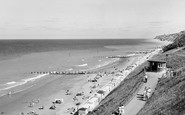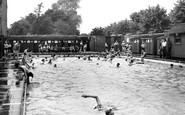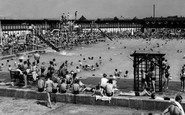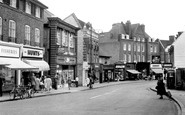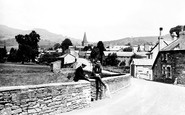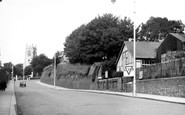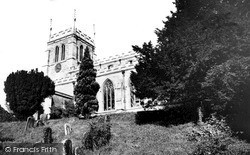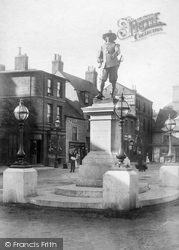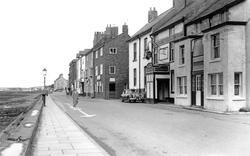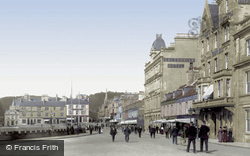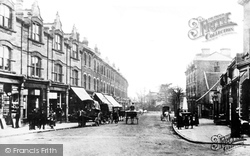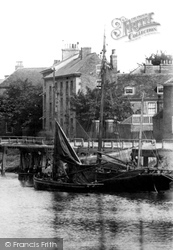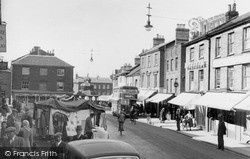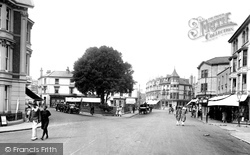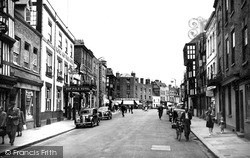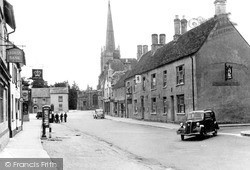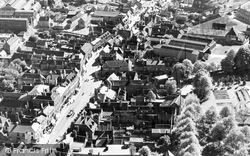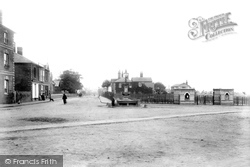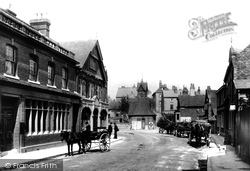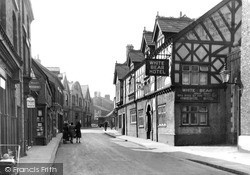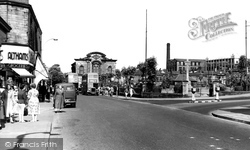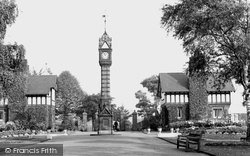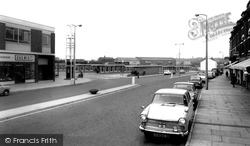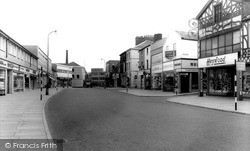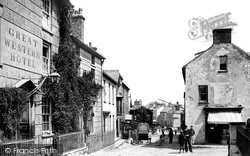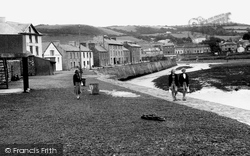Places
26 places found.
Those places high-lighted have photos. All locations may have maps, books and memories.
- Town End, Derbyshire
- Town End, Buckinghamshire
- Town's End, Somerset
- Towns End, Dorset
- Town End, Merseyside
- Town End, Cambridgeshire
- Town's End, Buckinghamshire
- West End Town, Northumberland
- Bolton Town End, Lancashire
- Kearby Town End, Yorkshire
- Town End, Cumbria (near Grange-Over-Sands)
- Town End, Cumbria (near Bowness-On-Windermere)
- Town End, Yorkshire (near Huddersfield)
- Town End, Yorkshire (near Wilberfoss)
- Town End, Cumbria (near Appleby-in-Westmorland)
- Town's End, Dorset (near Melbury Osmond)
- Town's End, Dorset (near Swanage)
- Town End, Cumbria (near Ambleside)
- Town End, Cumbria (near Lakeside)
- Town End, Cumbria (near Kirkby Lonsdale)
- Town End, Cumbria (near Ambleside)
- Town's End, Dorset (near Bere Regis)
- West-end Town, South Glamorgan
- Townend, Derbyshire
- Townend, Strathclyde (near Dumbarton)
- Townend, Staffordshire (near Stone)
Photos
23 photos found. Showing results 1,101 to 23.
Maps
195 maps found.
Books
3 books found. Showing results 1,321 to 3.
Memories
3,719 memories found. Showing results 551 to 560.
The Regal
In the fifties I remember the Regal cinema at Temple Fields. I think it was an old factory converted to a cinema. I used to go on Saturday morning with my older brother. You had to be arrive early or it would be full and you would not get ...Read more
A memory of Harlow by
The Beach Huts
We spent many lovely holidays here and my lasting memory is of our first job was to race down to the beach and see 'Dick' Davies and sort a beach hut for our 2 weeks stay, they were a little piece of calm when the weather was rough, ...Read more
A memory of Overstrand in 1972 by
Great Swimming Memories From The 1950s & 60s
I remember it well, we fought to get a single cabin instead of what we called the Monkey Cabin at the end which was the communal cabin where people finished up going home wearing something they didn't arive ...Read more
A memory of Worksop in 1955 by
My Sweetheart Days
Actually it was not Stairfoot but Lundwood. I met a young girl at the Barnsley fairground and it may have been love at first sight and we were to be married at the Barnsley Town Hall but after a few years of us being married ...Read more
A memory of Stairfoot in 1975 by
Growing Up In Enfield
I remember the pool very well, I attended Suffolks Secondary Modern School in Brick Lane, just off the Great Cambridge Road, we walked to the pool for swimming lessons but if you could not swim the teachers did not bother to try ...Read more
A memory of Enfield in 1951 by
Remembering The High Street As A Young Child
I remember going into the Prompt Cafe with my parents along the High Street. As a young child, I can recall seeing loads of little mats or coasters on the wall. Yes, I also remember the strong smell of ...Read more
A memory of Beckenham by
My Home Town
I was born on New Road, Crickhowell in the year of your photograph of 1931 and I love the town. I left there in the late 1930s, only to return in 1949, leaving in 1955, but I return each year to visit old places and tend the graves ...Read more
A memory of Crickhowell in 1930 by
Church Choir
I remember when I was about 14 being a choir boy in St Mary's Church. This would be 1953. We used to receive two shillings and sixpence for weddings, some of us belonged to another church further down the road toward Chatham and we would ...Read more
A memory of Chatham in 1953 by
Baldock Hostel
I lived in the hostel in the 1960s and liked the area very much. I was a member of the working man's club, the cinema always had up to date films. The town boasted good pubs, there was plenty of work in nearby Letchworth. I had spells ...Read more
A memory of Baldock by
To Wheatley And Back
After the Second World War and during the austere period of rationing, among the items that were in short supply was coal. People would burn anything in order to keep warm, and many were the trips that I made ...Read more
A memory of Intake in 1947 by
Captions
5,054 captions found. Showing results 1,321 to 1,344.
From this view it is obvious that the town occupies a ridge between the two rivers: the land drops to the Great Ouse (see the previous views) and to the Ouzel, as we see here - this view was
Shortly before this photograph was taken, the Town Council approved an expenditure of £850 to be paid to Frederick Pomeroy RA for the design and execution of a statue of the Lord Protector
The town of Parkgate has a rather fascinating history. It started as a small, coastal hamlet occupied by a few fishermen and shrimpers.
Fishing and agriculture played an important part in the economy of the area, but it was the opening up of the Western Highlands to tourism that gave the town the boost it so desperately needed.
The photograph looks from outside the present entrance to Hornsey Town Hall and towards the town centre soon after the completion of most of the buildings, and a decade before the influx of extensive but
The Corporation kept the right to choose the two MPs for the town until 1640. It remained an oligarchy until 1835 when a major reform allowed it to be elected by some of the townspeople.
After ten years of neglect the Paines' brewery site has been redeveloped in a mixed housing and business scheme. This began in 1998 and was completed in 2001.
North Walsham has a long history as a weaving town producing a lightweight cloth; there were also foundries here manufacturing farming machinery and implements, which were sold all over the area from farming
Skirts and hair were shorter than ever before in the new decade! A two hour horse-drawn carriage ride for four people cost two shillings (10p).
The ancient town of Totnes was once second only to Exeter as a prosperous merchants' town, but declined in importance in the 19th century. This view shows a lower view of the High Street.
In the days of horse-drawn travel, Tewkesbury was an important coaching town.
The Cotswold rivers of Coln and Leach join the Thames here, and the town is much influenced by them.
Bromsgrove lies a few miles west of Redditch, and it is an ancient market town which has become a suburban satellite of Birmingham.
Bromsgrove lies a few miles west of Redditch, and it is an ancient market town which has become a suburban satellite of Birmingham.
The three-storey building to the left is the Nag's Head Inn, and buildings with the finial on top are the Manor Street School.
The quaint old clock tower with the fire station in its base, which stood at the foot of Gravel Hill, was an early casualty of the town planners' ruthless remodelling of the town centre.
Along with Northwich and Nantwich, Middlewich is one of the three salt towns of Cheshire. It sits over the old Roman town of Salinae.
This main road through the town used to be the Wakefield to Halifax road, originally built by the Romans. Business in the town was not only concentrated on blanket making.
Renowned as one of the finest parks in the north of England, Queens Park was given to the town by the London and North Western Railway Company to commemorate fifty years of the railway in the town.
When the new bus station opened in May 1963 on the site of two former glass works, it was during a period of massive redevelopment in the town centre.
This slow growth of population in the 1900s is explained by the fact that Runcorn was very much a cul-de-sac town.
This view shows the higher part of the town. Note the Rees, Baker & Co., Fishguard delivery cart and the Great Western Hotel on the left.
Between the wars, Worthing lost its wonderful town hall and theatre.
The harbour was built owing to the foresight of the Reverend Alban Gwynne following the enabling 1807 Harbour Act, and he spent his wife's inheritance building the planned Georgian town to go with it.
Places (26)
Photos (23)
Memories (3719)
Books (3)
Maps (195)



